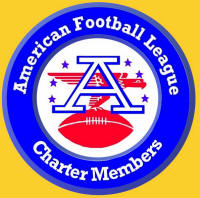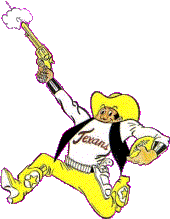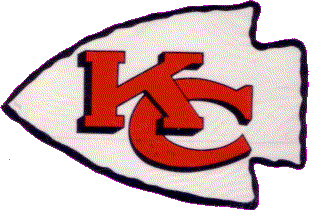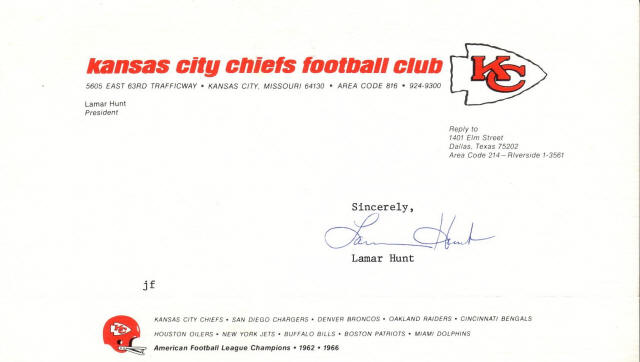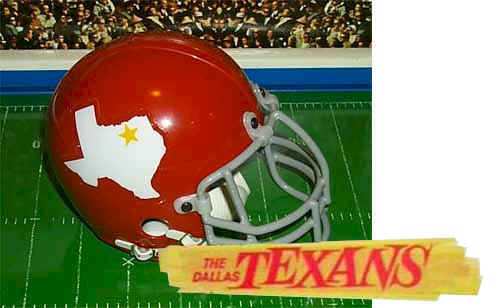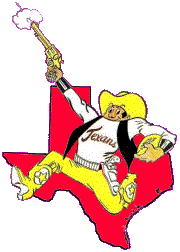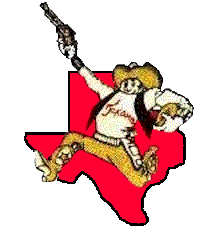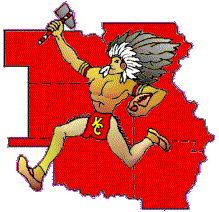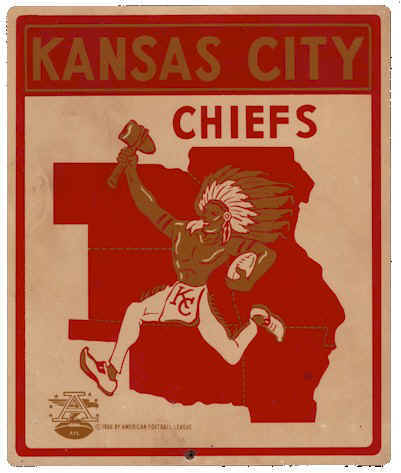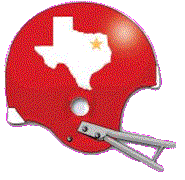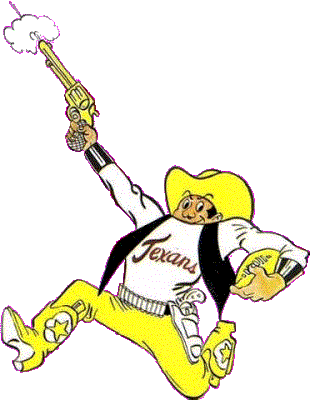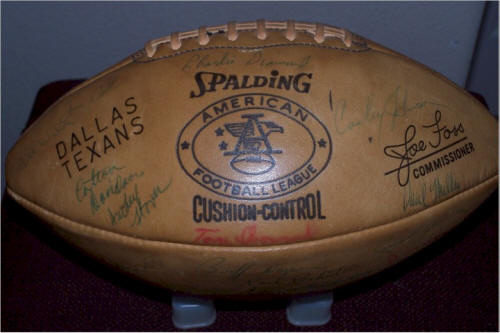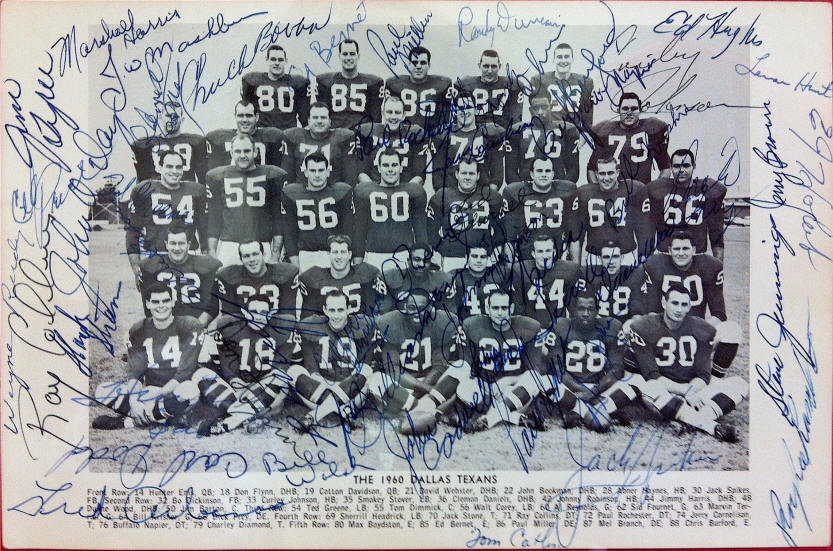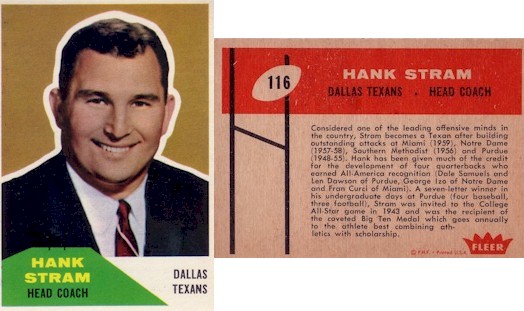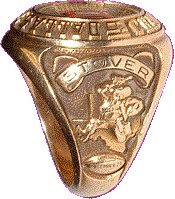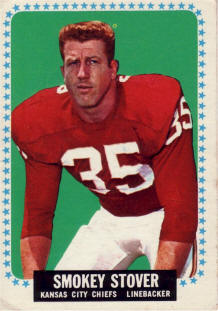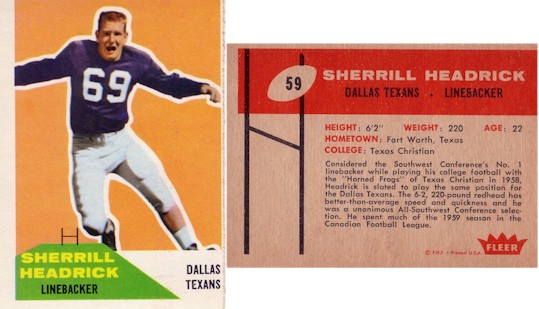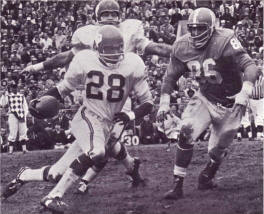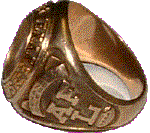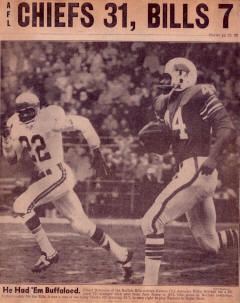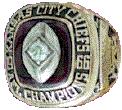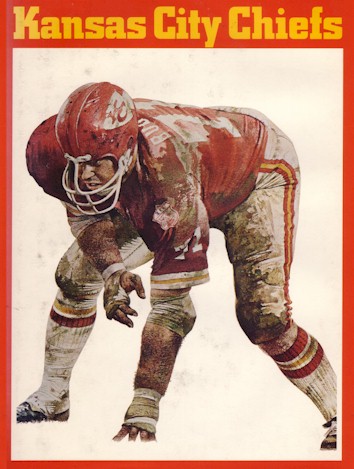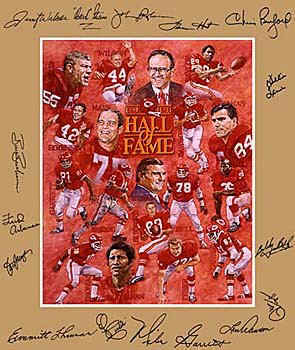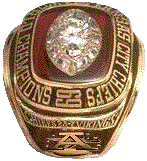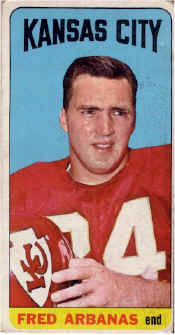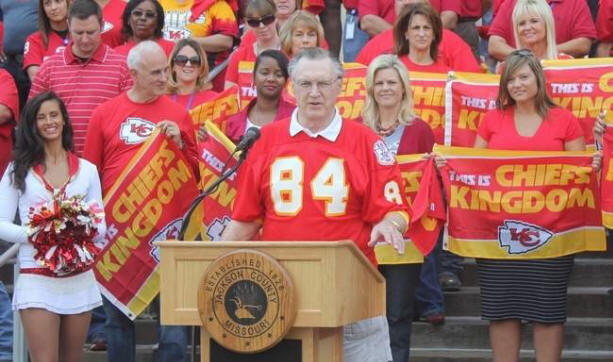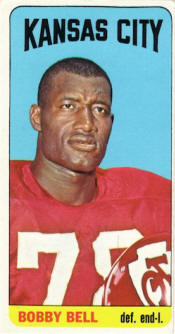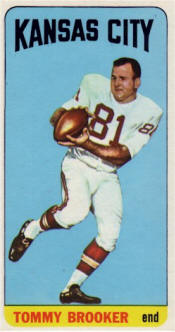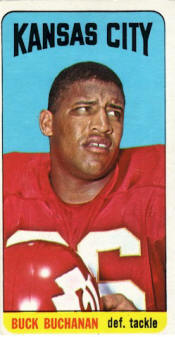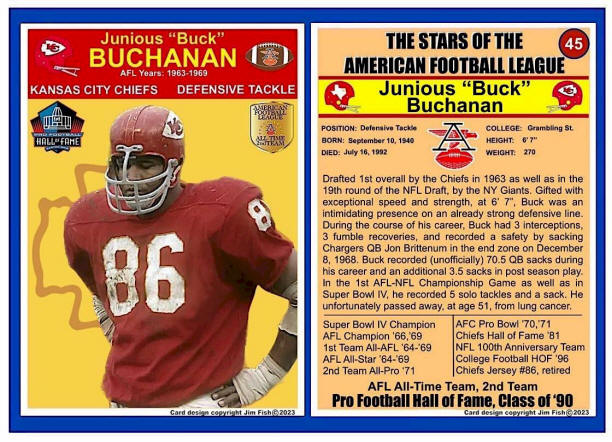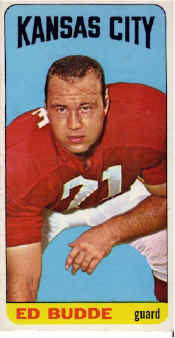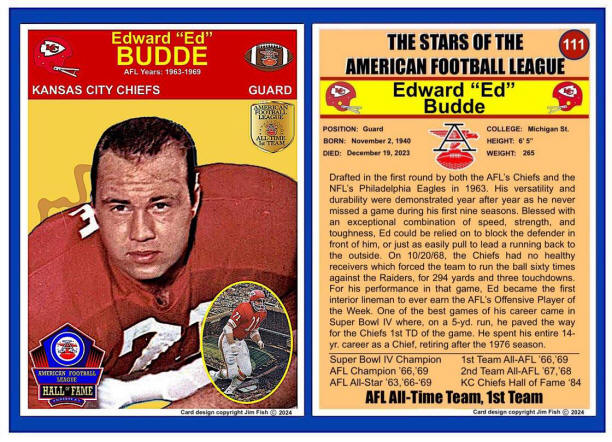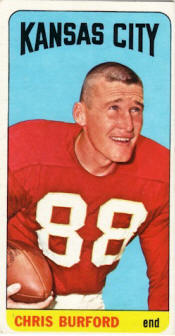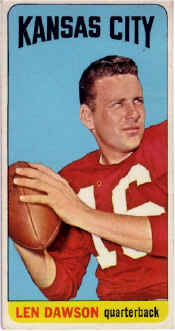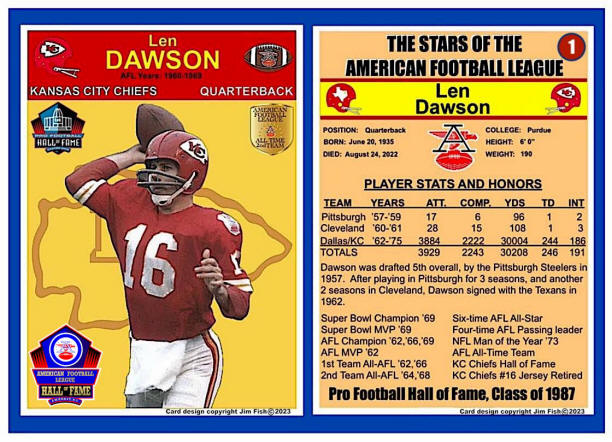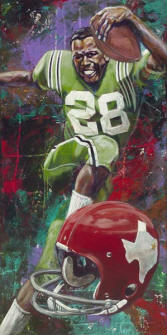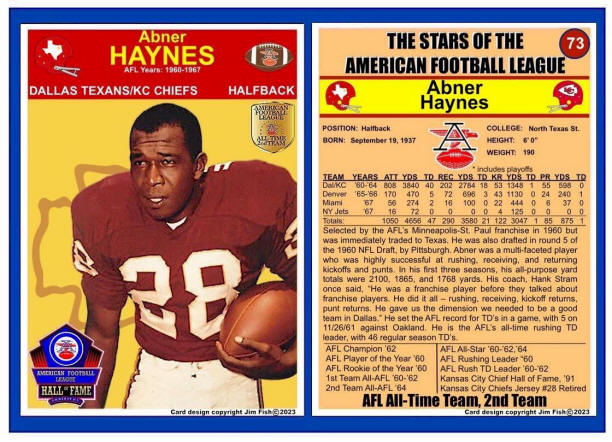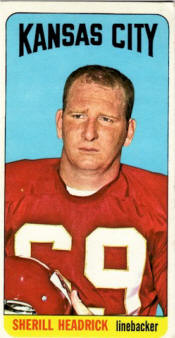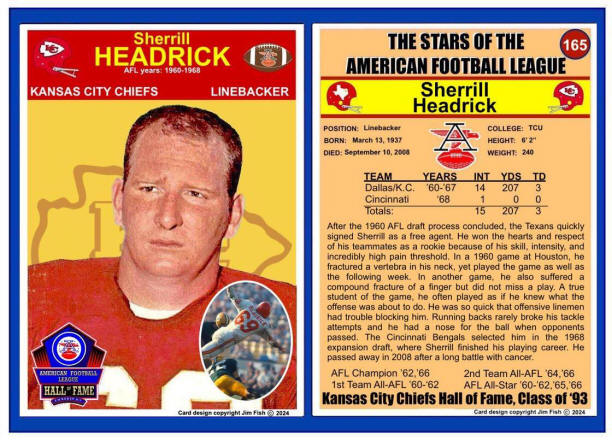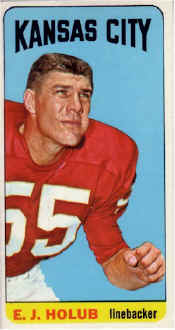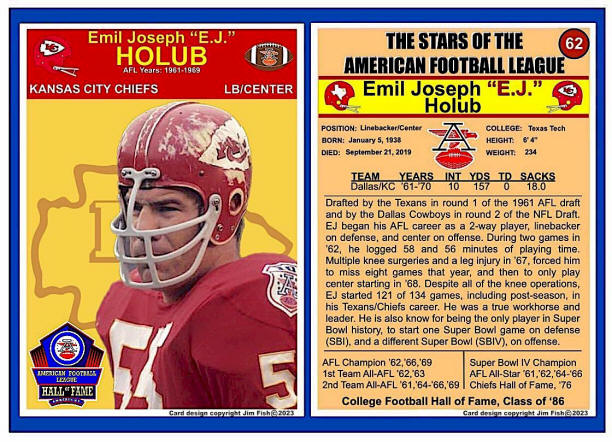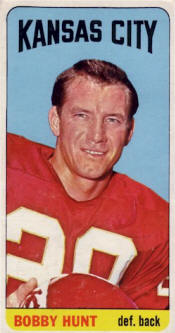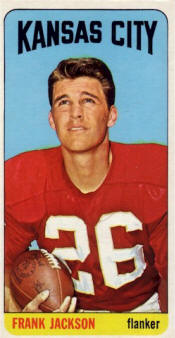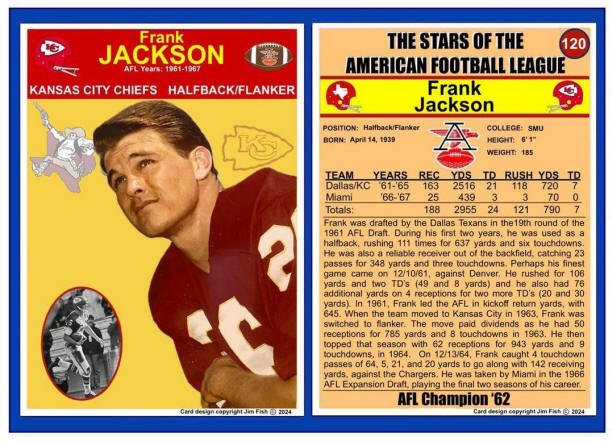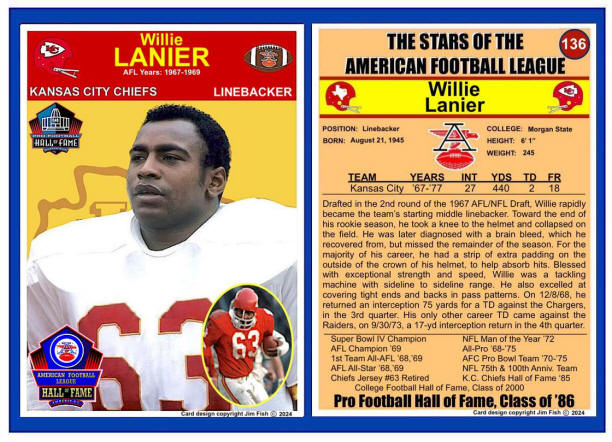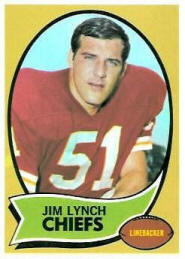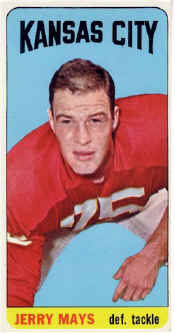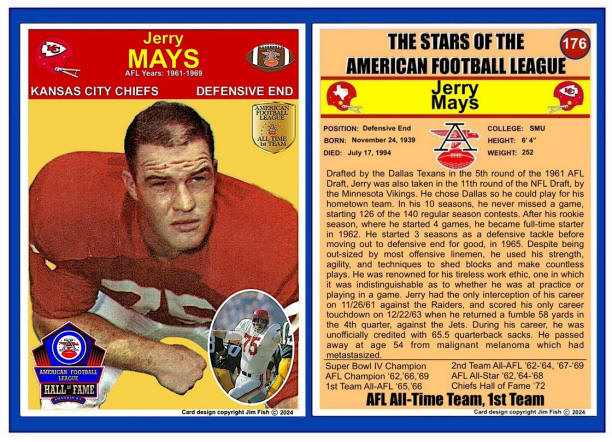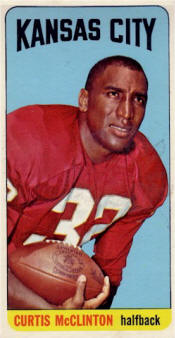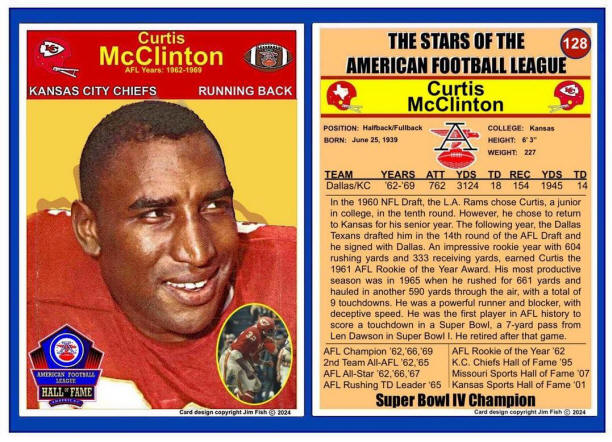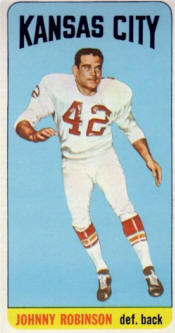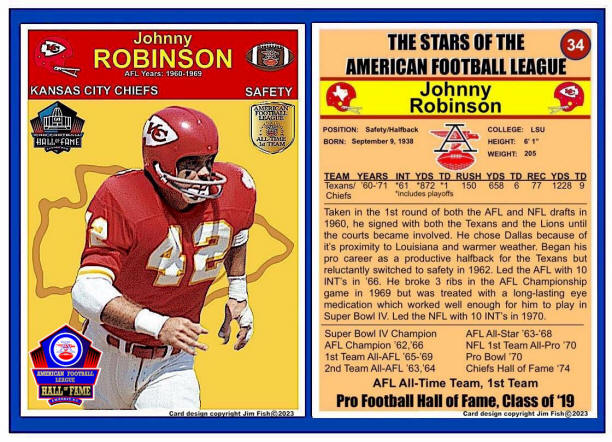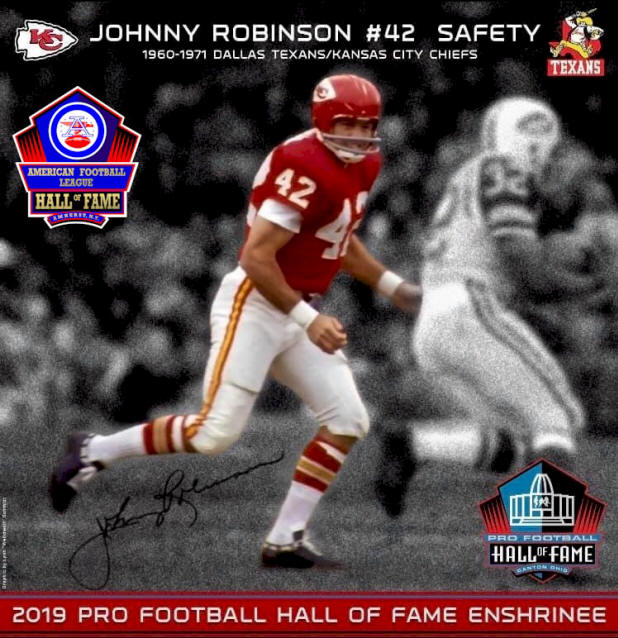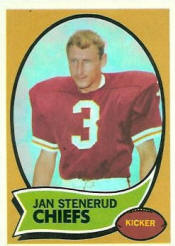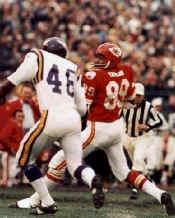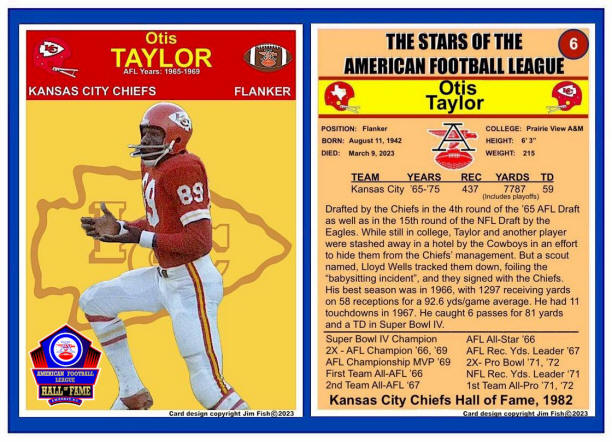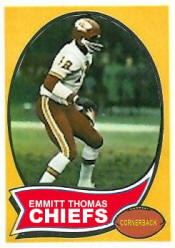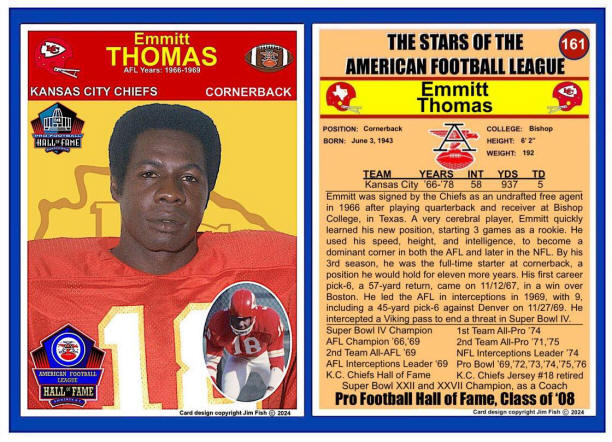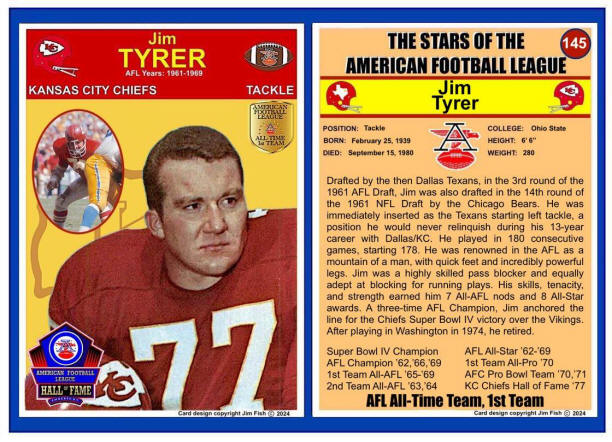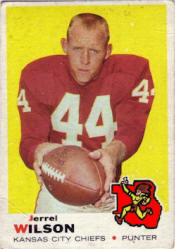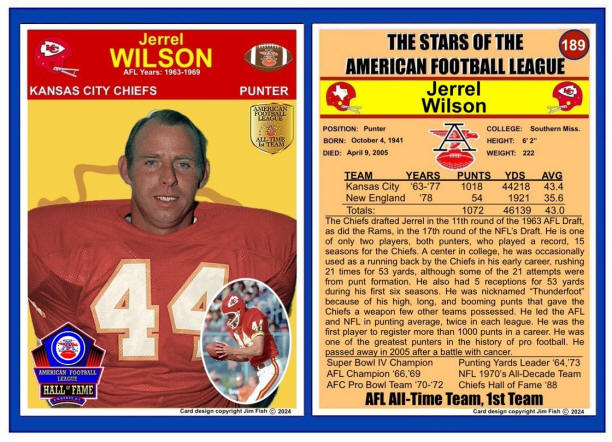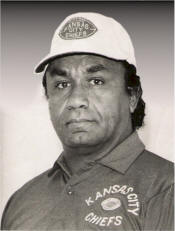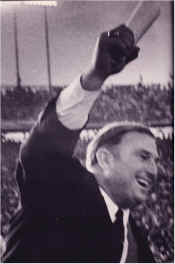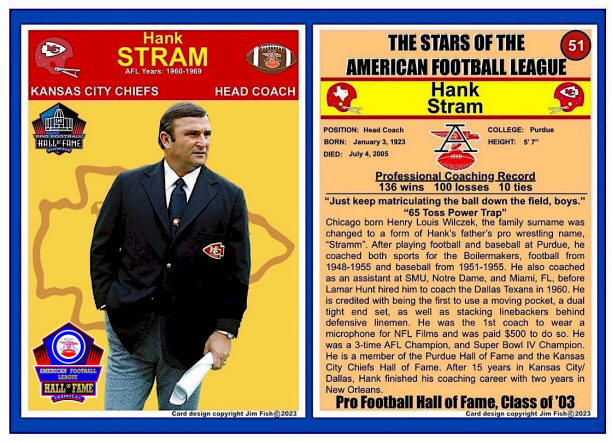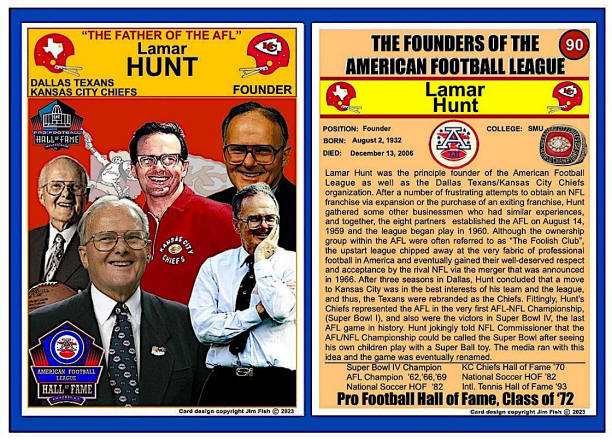ABNER HAYNES
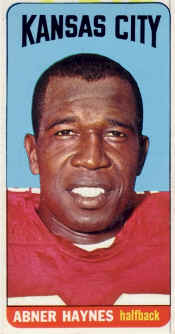
Click here for more
|
In 1956 Abner Haynes attended North Texas State University (now
the University of North
Texas), where he helped make
the school one of the first in Texas to integrate its football
program. In 1960, Haynes chose to play for the Dallas Texans and led the
American Football League in rushing attempts, yards, and TDs in the league’s first
year. Haynes helped launch the AFL in 1960, when he was the fledgling league's first
Most Valuable Player, and its first
Rookie of the Year. He captured the AFL's first
rushing crown with 875 yards, and also led the Texans in receiving, punt returns, and
kickoff returns. Haynes spent three years in Dallas and two with the Kansas City
Chiefs. Haynes still owns 11 franchise records, including most points in a game
(30), most touchdowns in a season (19), most touchdowns in a game (5), most career
100-yard rushing games (12), most career rushing touchdowns (39) and most career combined
yards (8,442). Over his career he was regularly among the American Football League's top
ten rushers, ranking third all-time, and the all-time leader in touchdowns, with
46. He was Hall of Fame head coach Hank Stram's most versatile and dangerous
weapon from 1960-62, amassing 43 touchdowns and 4,472 yards on rushes and receptions. In
1962, he helped the Texans win the American Football League championship in the classic
double-overtime victory over the defending champion Houston Oilers, scoring touchdowns on
a 28-yard pass reception from quarterback Len Dawson, and on a 2-yard run.
"He was a franchise player before they
talked about franchise players," praised Stram. "He did it all - rushing,
receiving, kickoff returns, punt returns. He gave us the dimension we needed to be a good
team in Dallas."
The 6-foot-1, 200-pound Haynes,
who had great speed and dazzling moves in the open field, set AFL records
with 5 touchdowns in a game and 19 touchdowns in a season in 1961, and with
46 career rushing touchdowns. He also played for the Denver Broncos, the
Miami Dolphins, and the New York Jets.
During his 8 professional seasons,
Haynes carried the ball 1,036 times for 4,630 yards, a 4.5 average; caught
287 passes for 3,535 yards, a 12.3 average, and 20 touchdowns; returned 85
punts for 875 yards, a 10.3 average, and 1 touchdown; and ran back 121
kickoffs for 3,025 yards, a 25.0 average, and 1 touchdown, and ran a
recovered fumble back for a td: 69 total touchdowns, for 414 points. |
Haynes accumulated 12,065 combined yards, the American Football League record,
and 68 combined touchdowns.
Haynes had three games in which he gained 100
or more yards on 14 or fewer carries. He
sponsors "Heroes of
Football" a program that re-connects
pro football players with communities and charities.
Abner Haynes is a 2007 inductee to the
Texas Sports Hall of
Fame.
The photo below is from the
30 September 1962 game between the Buffalo Bills and the Dallas Texans at
the Cotton Bowl. Haynes ran for 164 yards on just 16 attempts, with
two touchdown runs, one of 71 yards and one of 13 yards, in the Texans' 40 -
20 victory. Bills number 82 is DE Mack Yoho. Attempting
the tackle (number obscured) is number 56, LB Archie Matsos. |
![]() Bobby Bell
was named an All-American at
the
University of
Minnesota,
where he won the 1962
Outland Trophy
as the nation's outstanding interior lineman.
He was
drafted by the Chiefs in 1963 and
was an
AFL All-Star
for six straight years, 1964 through 1969. He was
on two AFL Championship teams and a World Championship
team. He was named to the
All-Time All-AFL Team
in 1970.
Bobby Bell
was named an All-American at
the
University of
Minnesota,
where he won the 1962
Outland Trophy
as the nation's outstanding interior lineman.
He was
drafted by the Chiefs in 1963 and
was an
AFL All-Star
for six straight years, 1964 through 1969. He was
on two AFL Championship teams and a World Championship
team. He was named to the
All-Time All-AFL Team
in 1970. 